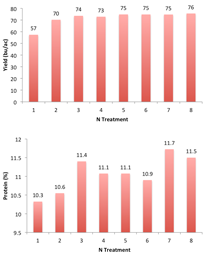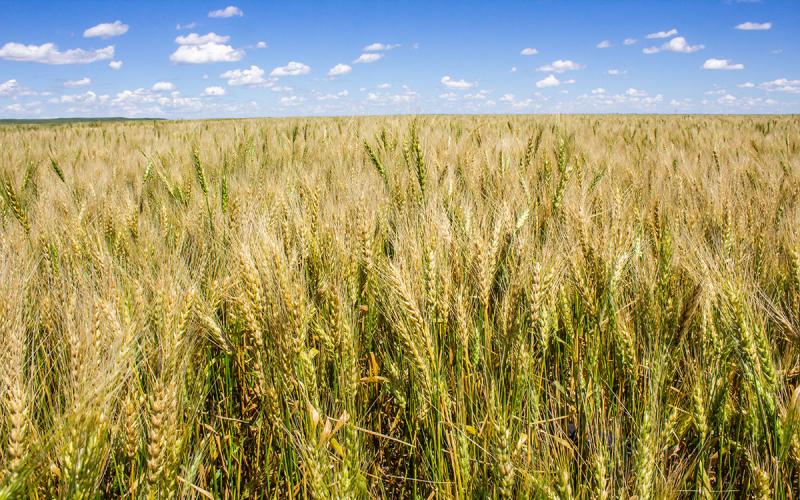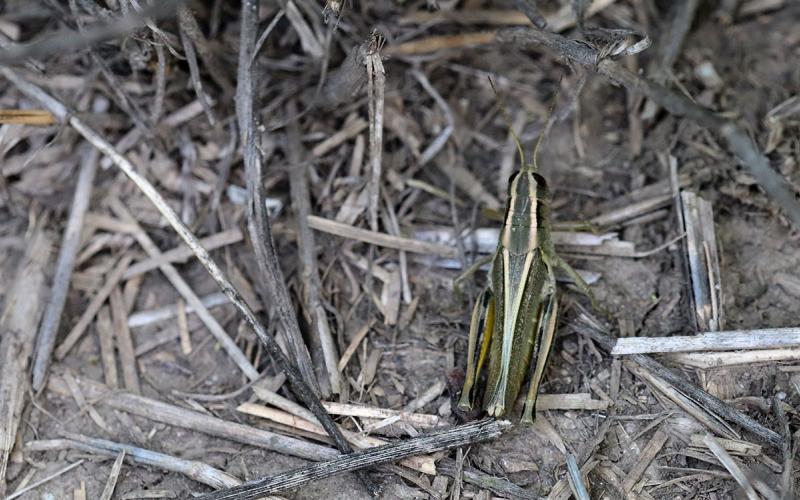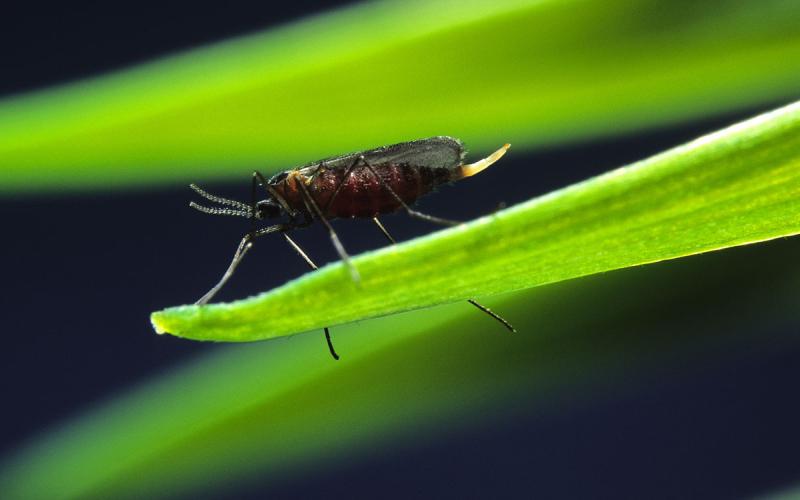Winter wheat planting season is soon at hand. Questions often abound on the issue of fertilization rates, timing and placement. Over the years, a lot of research has focused on starter fertilizers or split-applying nitrogen (N) and other nutrients. In general, phosphorus placed with the seed has been shown to increase tillering and total grain yield. Nitrogen is more uncertain, due to the possibility of salt burn and the associated yield losses. However, under proper management and environmental conditions, the practice of split-applying N (starter at planting and a spring application) can be an effective strategy for wheat producers.
There is no single, safe N rate recommendation that can be placed with the seed for all environments or planting conditions. In general, 10 lbs N/ac is often used as a rule of thumb. The amount of N that can safely be placed with the seed depends on soil moisture, where drier conditions increase the likelihood of seed damage. Other factors that can increase seed susceptibility to salt burn are high pH and course textured soils. South Dakota State University offers a very useful tool to assess the risk of various rates of N on a number of different crops.
The limitations that potential N toxicity place on application often leads many producers to question whether there is enough in the soil for early wheat growth using only seed-placed N. Preliminary results from research in Wall, South Dakota suggest that this approach is feasible. Winter wheat was planted with a starter fertilizer placed with the seed, which contained ~ 10 lbs of N as 28% urea-ammonium-nitrate (UAN). This served as the baseline control (Treatment 1 in Table 1) with no additional N. Seven additional treatments were applied as described in Table 1. These treatments were selected to investigate the use of urea vs. UAN, the effectiveness of placing UAN-N in a mid-row band (MRB) or broadcast urea-N and the timing of N application.
| Treatment | Description |
| 1 | Control - Starter fertilizer only |
| 2 | MRB-placed N @ 70% of recommended rate at planting |
| 3 | MRB-placed N @ 100% of recommended rate at planting |
| 4 | Broadcast urea @ 100% of recommended rate at planting |
| 5 | Starter + urea broadcast in early spring |
| 6 | 70% of recommended rate MRB at planting + 30% streambar at Feekes 6 |
| 7 | Streambar 100% of recommended rate at Feekes 6 |
| 8 | 70% of recommended rate broadcast urea in early spring + 30% streambar at Feekes 6 |
Table 1 and Table 2 show the yield and protein content for each treatment. These results support the assertion that very little fall-applied N is needed to maintain yields in winter wheat in western South Dakota. For example, yields from applying the full-recommended N at planting (Treatments 3 and 4) did not differ statistically from treatments where starter N was the only fall-applied N source and further N was supplied in the early Spring (early March) or in-season at Feekes 6-Jointing (Treatments 5, 7 and 8). Protein content was a little more variable and difficult to interpret based on these results. It is important to note that this is just one year of data and several more years will help clarify some of the results seen this season, with a particular focus on whether or not using only seed-placed N is sufficient for Fall growth.

| Treatment 1 – Control – Seed + starter fertilizer only | |
| Treatment 2 – N @ 70% of recommended MRB | |
| Treatment 3 – N @ Recommended rate MRB | |
| Treatment 4 – N @ Recommended rate seeding time broadcast | |
| Treatment 5 – N @ Recommended rate surface broadcast early spring or late winter. (urea granules) | |
| Treatment 6 – N @ Recommended rate w / 70% mrb at seeding / 30% Stream bar at Feekes 6 | |
| Treatment 7 – n @ Recommended Rate stream bar @ Feekes 6. | |
| Treatment 8 – N @ Recommended rate w / 70% broadcast early spring & 30% stream bar @ Feekes 6 | |


